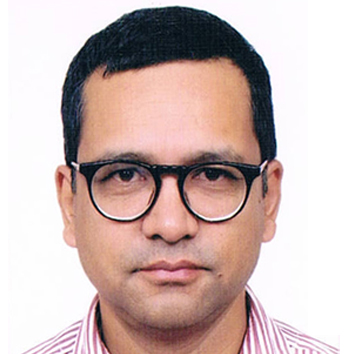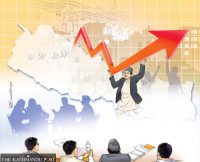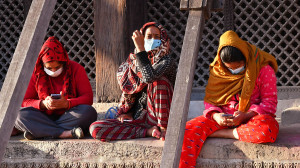Opinion
Advancing history
Discipline of history needs to address inherent barriers and constraints while innovatively linking teaching and research
Pratyoush Onta & Yogesh Raj
As we have shown in the book The State of History Education and Research in Nepal, published earlier this year, the institutional landscape of history in Nepal is somewhat different than that for other social science disciplines (say, sociology or economics). Graduation through a long training regime in the university has been almost mandatory for someone to function as an academic in the latter disciplines. Furthermore, the university is the undisputed and often, the only institutional location of significance in the landscape of teaching and research in those disciplines.
This has not been the case in history in the past and might not be the case in the near future. The university (in Nepal or abroad) has emerged in the recent decades as the principal site where historians gain their credentials. But it is not the only institutional setting where historians have done their work or will do so in the future, given the strength and continuity of historical knowledge production beyond academia.
This suggests two points. First, the policies for advancing the state of the history discipline need to address barriers and constraints, both within the university system and beyond. Second, the strategies for linking teaching and research in history in Nepal need to be more innovative than for the case in the other disciplines, as the sites of production, distribution, and consumption of historical knowledge have variegated organisational and institutional nature. The recommendations outlined below have been developed by taking these two points as guiding principles and only address some of the institutional aspects of the changes needed (others are discussed in our above-mentioned book).
Reimagining boundaries
First, considerable effort is required in reimagining the formation and boundaries of the history discipline within the university system. The Central Department of History at Tribhuvan University (TU), for instance, may be centred on teaching and conducting research in conventional subfields of history, but its bulk activities should tend to foster inter-, cross-, and multi-disciplinary collaboration with other disciplines.
There are at least three ways to achieve this. First, promote the student and faculty recruitments from as diverse first or advanced degrees as possible. Their demonstrable interest, and not certificates, in history should be prioritised. Institutionally, it may also mean mergers of departments or creating chairs for specialised fields within history and making other kinds of knowledge and skill serve historical enquiry. Second, encourage faculty and students to develop collaborative research projects with other departments. This will require selecting attractive research topics where historical knowledge is one input among many other kinds of knowledge. Third, foster historical enquiries in other disciplines. This will involve opening up history sub-specialties in other disciplines. While social and economic histories will remain core concerns of the department of history, chairs in historical sociology within the department of sociology and in historical economics in the department of economics should be created. In the courses aimed for the new universities, such historicising of disciplines should be explored.
Better collaboration
Second, institutional resources may be better utilised through improved networking and collaboration between existing institutions both within and beyond academia. For instance, the departments of history and languages at TU and the Nepal Sanskrit University, History Association of Nepal (HISAN), independent academic research institutes like Samsodhan Mandal and Martin Chautari (MC), and government and private archives (such as the National Archives, Madan Puraskar Pustakalaya, Lotus Research Center and Asa Saphu Kuthi) as well as new research collectives that have arisen from various social movements (eg, Centre for Ethnic and Alternative Development Studies, Tamang Pragyasabha, Limbuwan Study Center, Samata Foundation, Nepal Madhes Foundation, etc) could establish a historical research consortium, whose member institutions then jointly seek collaborative research funding from the various departments of the Government of Nepal and international agencies.
These institutions could collectively undertake the following activities: promote collection, preservation, dissemination, and research activities such as organising exploratory tours; creating project-oriented joint PhDs and research groups; holding regular and special lectures, seminars, reading groups, and an annual conference; discussing course and pedagogical innovations; organising trainings on methodology; and developing a Nepali history database by sharing/exchanging information and publications. Such a consortium is also better placed to generate and propagate historical information amenable to policy formulation and analysis.
More funding
Third, more institutional public funding for historical research and teaching should be made available in proportion to its quality products and public impact. The funds could take shape in three forms: seed/innovation funds (10 percent), development funds (60 percent), and impact funds (30 percent). Since the major share of public funds for history teaching and research is currently spent on the inadequate salaries of university-based teachers, the funding mechanism is inhibitory both to quality research and teaching. Furthermore, institutions beyond university departments and centres have managed to survive solely through their own perseverance and deficit funding. A public funding scheme should not only reflect the university/non-university divisions in the history institutional landscape in Nepal, but also be sensitive toward its diversity in terms of the nature, location, history, and specialisation of institutions.
All history-related funding could go, for instance, into a history basket fund. The basket fund could be governed by a committee of reputable scholars and researchers. The funds could then be awarded to all sorts of institutions based on good prospects for start-ups and excellent reviews of institutions with a track record. In addition to the public money, various organised private sectors of the economy, such as banking and finances, transportation, energy, infrastructure, and development may be incentivised to spend more on historical research related to their sectors, not only because the public tax collection and distribution system is inefficient in Nepal, but also because these research could result in a better understanding of the structural constraints and potentials of their own sectors.
Large institutions supported with public money could also support research programmes related to their sectors. For instance, the Nepal Army and the two offices of the Nepal Police could support the work of in-house and external researchers to produce not celebratory histories of themselves but critical accounts that help democratise these institutions and facilitate their relationships with larger Nepali society.
Are there any takers?
Raj and Onta are historians based at Martin Chautari, Kathmandu




 10.12°C Kathmandu
10.12°C Kathmandu









%20(1).jpg&w=300&height=200)

